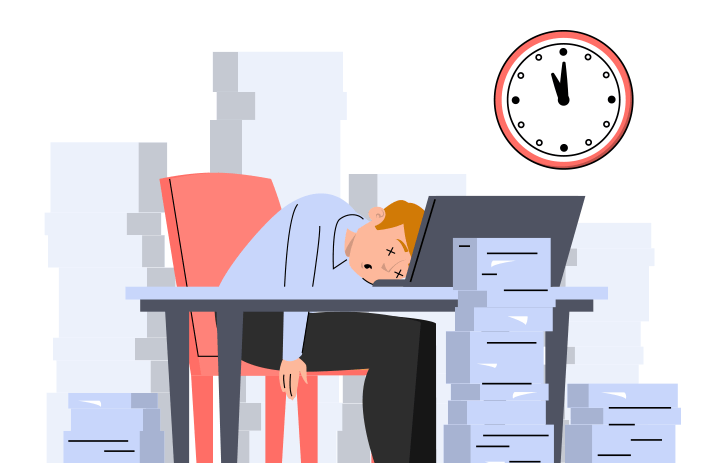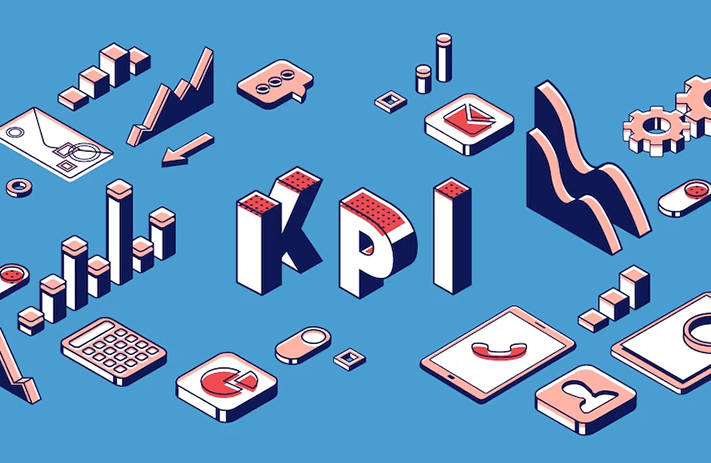
Click the button to start reading
Had Enough at Work? 13 Reliable Ways to Tackle Overwhelm on the Job
Mercedes never mentally left her job. The hamster wheel in her head spun around comments from coworkers, things she’d done wrong, and interactions with difficult clients. Her life away from work had devolved into social media deep dives, video games and sleeping.
By 4 pm on an average day in the office, Lucas had been to five meetings, taught three one-hour lessons, and oriented new staff. In the afternoon hour reserved for checking emails, he’d simply stare at the computer. His body was so spent he was unable to open anything, let alone compose a message and press send.
Do you relate to either of these two?
Or, maybe you feel like a Cinderella. Colleagues are always approaching and asking for favors, for your time, and your pile of to-dos grows and grows and grows.
It’s so easy to get caught up in unhealthy cycles at work, which can quickly increase in speed and overwhelm us.
In order keep from spinning into burnout, it’s critical to bring a calm presence to the workplace, to regularly restock and refresh, and to have real work-life balance.
Including managing daily workflow, transitioning between work and home, and recovering from burnout, here are thirteen helpful methods to stop being overwhelmed at work.

A Rejuvenating Workflow
When we bring our best to an activity at work, it’s not unusual to feel a little drained afterwards.
A workday that consists of a series of demanding meetings, courses, and activities, with no windows for respite, starts to feel like a blur, and we aren’t present to anything at all.
In order to bring your A-game to each moment, here are three strategies for successfully transitioning between tasks at work.
1. Let It Go
After leading a meeting, or teaching a course, it’s perfectly natural to feel exhausted, even if everything went smoothly. That’s just the nature of working well and working hard.
Before packing our briefcase and moving onto the next thing, however, it’s important to pause, and deliberately release any energy or tension we carry from the activity.
This can be as simple as taking a few moments to calm our minds, and consciously release any tension in the neck, jaw, and shoulders.
Taking this moment restores our energy, and allows us to be present for the next task at hand.
2. Set Intentions
The focus we bring to each activity at work dramatically impacts its outcome.
For example, consider a team-building activity led by someone who’s distracted by emails. It won’t generate nearly the pep and enthusiasm of an activity led by someone who is present and engaged.
Before starting on a task, be it a meeting, a coaching session, or simply responding to messages, take a moment to set the intention.
Is your objective to bring joy? Build rapport? Or to educate? Finding this clarity keeps our energy aligned with the desired outcome.
3. Take Mindful Breaks
With a workload that’s tight and demanding, it’s critical to squeeze in windows of time to give your mind and psyche a chance to breathe. Taking a five or ten minute break every hour lets your system slow down, savor the moment, and relax.
It’s important to spend this time mindfully. Some activities, such as reading email, social media, or scanning headlines, may well trigger more angst and stress.
Things like walking around the block, a quick cup of coffee, or browsing through a recipe book are more likely to be calming diversions.
Or, if you’re at home, just a walk out onto the balcony or a snuggle with your cat should do the trick.
![]()
Tackling the Treadmill
Fluster and overwhelm often go hand in hand. Certain points in the business cycle generate increased frenzy, and at these times our brains fill to the brim with urgent to-dos.
Our agenda spills over with a myriad of tasks, yet we’re flummoxed. It’s too hard to tell what to take on first.
These three exercises have to do with strategies for handling periods that are jam packed with work.
4. List it Out
A mind full of clutter cannot focus on any one thing.
Taking a few minutes to empty your mind frees up space to think. This can be as simple as scribbling all your thoughts onto a blank sheet of paper.
With everything right in front of you, it’s much easier to sort through it all.
At this point, it’s simply a process of turning the scribbles into lists, sorted by topic and urgency. This allows priorities to surface.
With a mind that is spacious and calm, it’s possible to tackle a busy workload.

5. Do One Thing at a Time
When your day is chock-full of work, at first blush it seems right to do everything all at once. Why not pound out an email, write a meeting agenda and do payroll taxes at the same time?
However, multitasking, as it turns out, is actually less efficient than doing one thing at a time. A diverted attention span makes our brains frazzled, which increases stress and leads to overwhelm!
Focusing on one task at a time creates focus and calm.
During the busiest parts of the day, when everyone is working hard and collaboratively, it’s easy to fall into a habit of multi-tasking. In order to prevent this tendency, it’s helpful to close additional browsers, turn off notifications, and even put on a pair of headphones.
6. Set a Timer
Some projects feel so enormous it’s overwhelming just getting started. While other activities, such as interviews or pitches to a new client, easily trigger stress.
In these instances, it’s helpful to set a timer.
For example, tell yourself “I’ll work on this for two hours,” and then move onto the next thing when the window closes.
Giving yourself a precise endpoint makes it easier to take a bite out of a daunting or dreaded task.
The Pomodoro Method is another way to use timers to get through a workload. It entails working on an activity for 25 minutes, then taking a five minute break, before resuming for another 25 minutes. After four sessions, take a longer break.

Establishing Work and Home Boundaries
For most of us, the work environment is completely separate from the rest of our lives. We’re different, some might say better, versions of ourselves when we hang out with friends, spend time with family, and pursue hobbies.
However, it’s easy to get sucked into the cyclone of tension and drama in the workplace. And gnashing around in that whirlwind makes it impossible to bring an unstirred presence to these other parts of our lives.
After a day in a work setting that feels like a zoo, the monkey mind jumps around all evening long.
In order to create a healthy work-life balance, it’s necessary to establish a clear demarcation between these home and work environments. This entails deliberately preparing yourself for work, and consciously taking off the role at the end of the day.
7. Fill the Cup
The nourishment and TLC our body receives in the first hours of the day sets the tone and momentum for everything that comes later.
Having a method for centering ourselves makes us prepared for whatever the day brings.
A good morning routine can consist of so many things. Meditating, reading, exercising, drinking coffee, spending time in nature, and cuddling with pets all serve to bring the right energy to our day. The key is finding something that physically and psychologically prepares you.
Additionally, before starting work, either in your car, or simply at your desk if you work from home, take a moment to be present and set your intention for the work day.
8. Shower It Away
Taking a shower right when you get home from work is one method for transitioning from work to home.
Not only is a shower relaxing and luxuriating, but it also stimulates the senses. When you visualize the workday running off of you and into the drain, it allows your mind to leave the workday behind, and step into your role at home.
For a real sensory escape experience, consider infusing your shower with aromatherapy.
9. Have a Homecoming Ritual
Taking the time to do something you really love is a healthy practice for shaking away all the residual work-stresses.
As soon as you come home, spend twenty minutes doing something that really relaxes you. This could be having a cup of tea and reading fiction, doing yoga stretches, sitting by the fire and listening to music, or having a foot soak.
The point is to make it luxuriating, stimulating, and something you look forward to. It’s also important to make this time compulsory.
If you have kids at home, it might work better to do this ritual before entering the household. Stopping off at a coffee shop on the way home from work, and listening to relaxing music is a healthy way to transition.

Visualizing the Overwhelm
If your cat climbs across the table in the morning and tips over a box of cereal, it’s very clear where the problem is and how to fix it. All you need is a broom and dustpan.
So many of our issues at work, however, are abstract problems. Things like a dissatisfied client or an acerbic comment from a colleague are hard to quantify or define. And when we ruminate on them, their scope easily increases inside our heads.
Having many abstract problems like this creates a cloud of overwhelm.
In order to release this angst and worry, it’s necessary to clearly define the issue by turning it into something visual. Here are two methods for doing this.
10. Scribe it Out
When our head feels like alphabet soup, writing out the issues and concerns makes it possible to see the problem for what it is. It becomes just like the cereal split across the kitchen floor.
A problem that’s clearly defined is easy to diagnose. Many problems are best solved by “deleting” them, or just letting them go. Some need action right away, while others can be deferred until later.
Taking the time to create this clarity is a practical way to stop feeling overwhelmed by problems at work. Untreated worry has a tendency to grow and grow.
11. Loosening Workplace Unease
This visualization exercise is about envisioning a problem, then letting it go.
The first step is to think of something that reminds you of your problem. This could be a heavy, black raincloud, or possibly a tangle of knots.
Next, visualize this image dissipating–the cloud raining down water onto you, or the knots coming untangled.
Although this may sound hokey, this exercise is actually a powerful tool for releasing tension at the end of the day, or dealing with a recurring problem at work.
The key is to bring your whole mental energy into the exercise. It’s also helpful to repeat it periodically.

Recovering From Burnout
“Why am I burned out? Because I’ve internalized the idea that I should be working all the time,” writes Anne Helen Peterson in her article, “How Millennials Became the Burnout Generation.”
Burnout is the natural result of untreated overwhelm. A work pattern of driving and accelerating, without any pit stops, ultimately leads to crash and burn.
Recovering from burnout, or preventing it from happening in the first place, is about changing our attitude toward productivity. It’s necessary to incorporate practices that remind us that life is not just about churning and doing.
Here are two ways to do this.
12. Celebrate Your Wins
“Exhaustion means going to the point where you can’t go any further; burnout means reaching that point and pushing yourself to keep going, whether for days or weeks or years. What’s worse, the feeling of accomplishment that follows an exhausting task — passing the final! Finishing the massive work project! — never comes,” writes Peterson.
Approaching work like it’s a never-ending litany of to-dos, with no milestones or finish lines, certainly is a recipe for exhaustion.
Making a practice of celebrating your wins gives you the acknowledgement and respite you deserve for a job well done.
Many of our significant accomplishments go unnoticed by others—but that doesn’t mean we can’t recognize them ourselves!
Sometimes, simply making it to Friday is a real achievement. Deliberately patting ourselves on the back, with a dinner out or a weekend splurge, gives us pride in a job well done.
When we remind ourselves of the reward during the week, it’s easier to bring our best to whatever the day brings.
13. Practice Niksen
Niksen is a Dutch concept that means doing nothing (staring out the window, hanging out) with intention.
Spending thirty minutes gazing at the fire, watching the sun set, taking a walk or listening to music are all ways to engage in the practice of niksen.
Burnout and overwhelm oftentimes are caused from a sensation that we have more work than we can handle. From this state, we value and measure time solely in terms of productivity.
Niksen reverses this attitude toward time. It’s about deliberately creating a space where there are no to-dos. It allows the mind to step out of the hamster wheel and approach life and activity from a place of being rather than doing.
Blocking out times for niksen, say for thirty minutes each weekday, and for a longer period on the weekend, really helps to cure unhealthy attitudes toward time and productivity.

What’s Your Glass Slipper?
Successfully navigating work overwhelm allows us to maintain engagement and enthusiasm through a steady stream of demanding meetings, projects, and challenging work relationships. We approach our careers with joy and intention.
And the only thing we’re thinking about on the drive home, while listening to a favorite album, is eating a scrumptious meal paired with our favorite glass of wine.
Developing right relationships toward work is no small feat. Cinderella struggled with hers. Thanks to her stepsisters, she had her work-load piled high. But she navigated her way through it.
Using the right methods, we can as well. What is your go-to for handling work overwhelm?
















